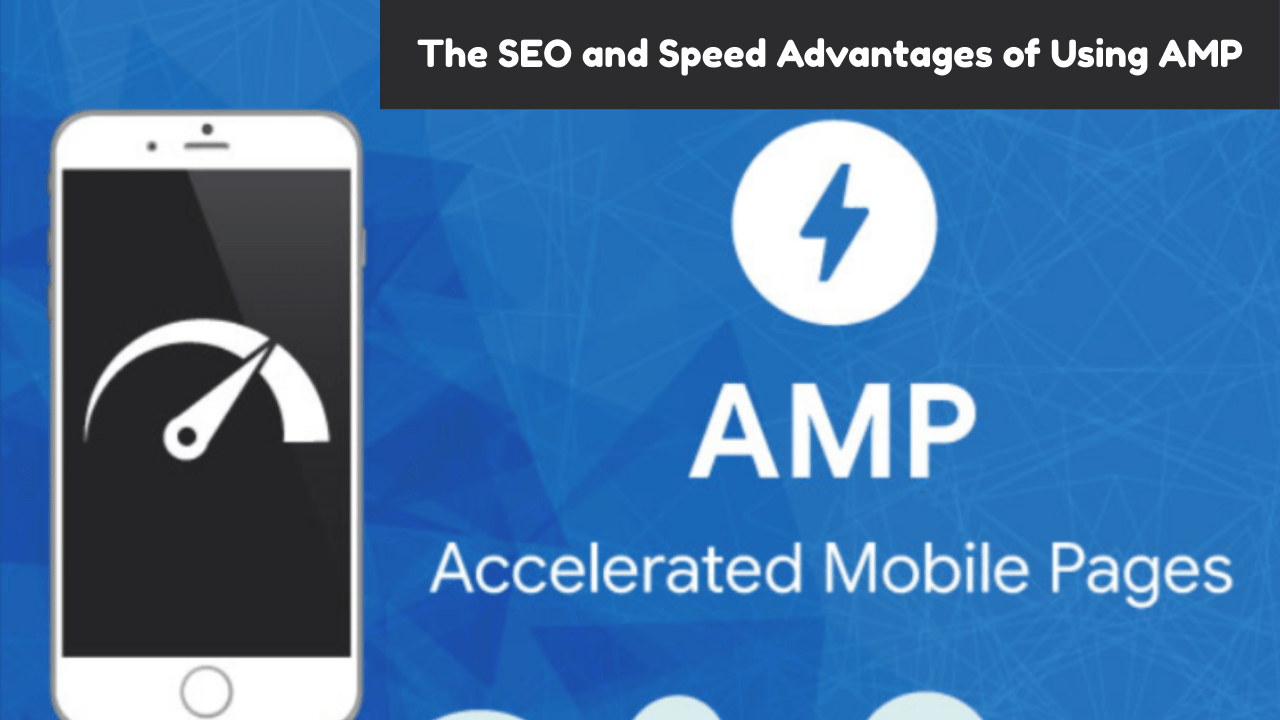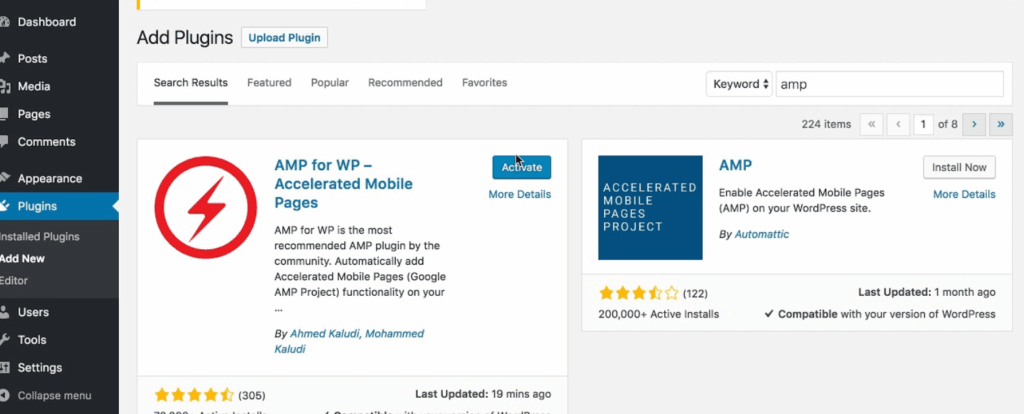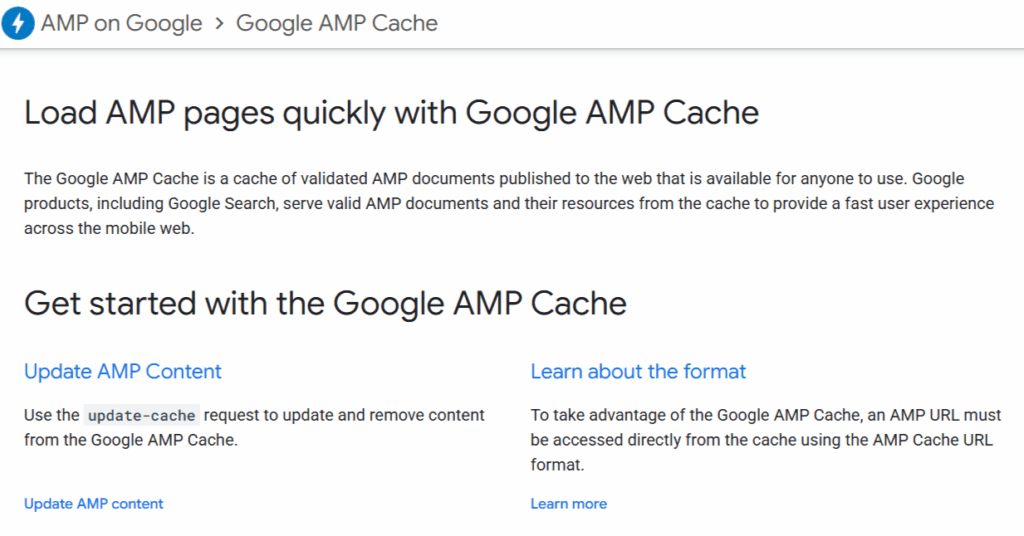
How Accelerated Mobile Pages (AMP) Supports SEO and Page Speed
- accuindexcheck
- 0
- Posted on
The mobile experience greatly differs from one site to another. Some provide seamless navigation through their pages with a touch of graphic content; others, however, are slow-loading and become victims of numerous other performance issues. To fix such problems, Google conceived the ‘Accelerated Mobile Pages’ in 2016, a framework optimised for speed and UI performance on mobile phones and tablets.
Longer load times beyond the two-to-three seconds mark can harm user engagement, cause bounce rates, fewer conversions, and lesser revenue from ads. Search engines perceive all these negative signals as indicators of irrelevance or bad user experience and discard any chance for ranking. With these problems in mind, an AMP was developed to avoid some or all of them and is adopted with few, positive trade-offs.
In the next sections, we will discuss all about Accelerated Mobile Pages, what they are, how they benefit you, their disadvantages, and how to best implement them.
What is Google AMP?
Accelerated Mobile Pages (or Google AMP) are open-source frameworks designed for fast deployment of lightweight web pages on mobile devices. AMP does not intend to be a parallel publishing platform; rather, it offers a limited set of HTML components and a JavaScript library, and an optional caching layer enforcing best practices in performance. This then allows the pages to load fast and less resource intensive with user content kept as a priority.
Technically, AMP is built around three core elements:
- AMP HTML — A subset of HTML with restrictions combining custom AMP elements for common tasks such as images, embeds, and ads to ensure efficient rendering.
- AMP JS — The runtime that schedules resource loading and asynchronous layouts with prioritisation so that critical content is presented at the earliest time.
- AMP Cache — The AMP Cache is an optional system (usually run by Google) that stores AMP pages and their content on servers around the world. This helps load pages faster by reducing delay when someone tries to open them.
How AMP Works
AMP accelerates page delivery through a predictable performance-first pipeline: An AMP document is authored with an AMP HTML, validated, and served with a runtime that manages resource loading and rendering. When someone opens an AMP page, the browser and AMP system focus on loading what the user sees first, delay less important tasks, and (if possible) pull content from the closest AMP server. The goal is to show something useful to the user as quickly as possible.
Key steps in the process:
- Author & Validate — Create pages with AMP HTML and run the AMP validator, which means validating the document for performance rules.
- Initial Parse & Layout — AMP requires that each part of the page has a fixed size and layout. This helps the browser figure out the page structure right away and prevents layout shifts while the page is loading.
- Resource Prioritization — AMP JS schedules critical resources (text, images above the fold) first, while everything else is loaded asynchronously.
- No Blocking Scripts — Blocking third-party JavaScript is forbidden; AMP components provide alternatives for embeds that do not block rendering.
- Optional cache delivery — In the final stage of validation, files can be served from an edge server by the AMP Cache, with no further round trip and with the least amount of latency.
Key Benefits of Accelerated Mobile Pages
Accelerated Mobile Pages bring several good points to a mobile traffic-heavy website. The basis of AMP pages is speed and the highest efficiency; consequently, this speed translates into user experience and, ultimately, business results.
- Faster loading times — AMP strips heavy elements, banning blocking scripts and forcing the priority on core resources so that pages almost instantly load on mobile devices regardless of whether the network is fast or slow.
- Lower bounce rates — With users unlikely to bounce from any fast-loading page, AMP lowers bounce rates and keeps readers engaged in longer sessions that promote better content interaction.
- More prominent search listing — AMPIFY-page listings can avail themselves of special placements, such as mobile carousels, while enjoying better location in Google search—thus accruing additional organic traffic.
- Better ad performance — Ads display faster and in consistent formats and, hence, perform better, resulting in higher click-through rates and ad revenue for publishers.
- More stable server usage — Serving cached AMP pages through global servers, such as Google AMP Cache, decreases bandwidth for the sites, allowing stability during sudden traffic spikes.
- Uniform mobile experience — AMP enforces predictable layouts and also prevents unexpected shifts, giving a delightful and dependable browsing experience irrespective of different screen sizes and devices.
SEO & Indexing Considerations
Google gives preference to pages that load fast and are user-friendly in its search results. Formerly, one had to use AMP to appear in the top stories carousel, but non-AMP pages that meet the page experience standards can now also qualify upon fetching. One can say, thus, that AMP remains useful for speed and engagement yet is no longer essential for special features.
Because the AMP page contains the same content as the original, the main page should include a rel=”amphtml” link to the AMP version. In return, the AMP page should link back to the original page using rel=”canonical” so search engines understand they’re connected. So, the search engine is properly informed about primary versus secondary to be indexed.
Structured data is also important: both AMP and canonical versions should contain identical schema markup to remain eligible for a rich result. For violators, implementation of so as to replace the traditional scripts is essential to provide accurate data tracking on all kinds of metrics such as user sessions, conversions, and engagement.
When to Use AMP (and When Not To)
When to Use AMP:
- Perfect for publishers, blogs, and news websites, where speed is extremely important and the content is constantly updated.
- Ideal for mobile-first landing pages and simple promo campaigns that require fast loading time.
- Works for recipe sites, article platforms, and media outlets that benefit from quick rendering with higher CTR.
When Not to Use AMP:
- Avoid for applications in highly complex web applications or sites relying heavily on custom JavaScript and interactive features.
- Avoid AMP on feature-rich e-commerce stores, product customization, dynamic filters, or heavy third-party integrations.
- Avoid for single-page apps or advanced tools where functionality and custom user experience weigh heavier than the mere technical constraints of speed.
How to Setup AMP on Your Website?
Setting AMP means fast, stripped-down pages for mobile phones. It needs AMP templates, validation, and a search engine setup. Follow through the process step by step:
Install AMP Support

Enable AMP on your site first. With a WordPress-based site, do activate the official AMP plugin, which in return builds an AMP-allowed version of every post and page for you. All other CMSs or custom codes will have to resort to making separate AMP HTML templates that go through a streamlined HTML that sheds heavy scripts to see your content load faster for mobiles.
Add Canonical and AMP Linking
An incorrect and inconsistent SEO configuration is produced when the original version and its AMP counterpart are not properly tied. The original page uses the rel=”amphtml” tag to link to its AMP version, while the AMP page includes a rel=”canonical” tag that points back to the original. This makes clear to Google the relationship existing between these two while providing for the prevention of duplicate content.
Use AMP Components
AMP disables the use of normal HTML, CSS, and JavaScript; hence they are all to be replaced by their AMP counterparts. For instance, images should be loaded via <amp-img> and videos provided through <amp-video>. Yet another limitation sees the inline CSS limited to 75KB. Thus, a well-crafted AMP page is always kept lightweight, fast, and is in line with Google regulations.
Validate AMP Pages
After setting up your AMP templates, the next important step is validation. AMP pages that are invalid may load, but they do not make it to the Google AMP carousel or weighlay from other perks. You may go for your validation by using the AMP Validator, Chrome DevTools, or even Google Search Console to make sure your pages follow the official standards. Rubberstamping errors assures full indexing of your pages.
Enable AMP Cache

Generated after validation, your cache is rendered onto the Google AMP Cache and various other caches stating Bing AMP Cache. This cache-based system aggregates preloads and storage of your content on servers dispersed across the globe, thereby enabling users to access it instantly without any hold-up from your server’s end. Using AMP cache brings great user experience as it decreases latency.
Common Errors & How to Avoid Them
AMP can speed up performance — but if neglected, several common mistakes can undermine the advantage. Be on the lookout for:
- Validation issues — If your AMP code isn’t valid, some features and caching may not work. It’s best to use the AMP Validator and correct any errors before publishing.
- Duplicate content errors — Wrong canonical/amphtml links create indexation issues; each AMP page should point to the canonical and vice versa.
- Analytics broken — Regular JavaScript analytics will not work; keep your tracking of conversions with the or tag-manager templates.
- Poor ad implementations — Misconfigured AMP ads drain revenue and impair UX; use AMP ad components and test ads rendering and viewability on all devices.
- Plugin conflicts — Some plugins may insert disallowed scripts or markup; test your AMP pages in staging and disable incompatible plugins or replace them.
FAQs
What is AMP?
AMP stands for Accelerated Mobile Pages. An open-source framework created and maintained by Google for making codeless and very light web pages for mobile devices. It prohibits heavy script and enforces optimized layouts and quick rendering of visible content.
Does AMP affect SEO?
AMP facilitates better content, faster page speed, and mobile-first user experience. Any onset of increased page content leads to lowered bounce rates, higher user engagement, and content being eligible for mobile-first SERP feature perks like the Top Stories carousel that gets increased organic traffic.
How do I link AMP and non-AMP pages?
Each AMP page should link to the canonical page to resolve duplicate content issues. The canonical page should have . The AMP page should have to tell the search engines which should be indexed and preferred.
Can I use JavaScript on AMP pages?
AMP forbids custom JavaScript for speed maintenance. Instead, you should opt for AMP components, for instance, for sliders or for embedding videos. They’re the performance pros, allowing interaction without delaying page load times.
How do I test if my AMP page is valid?
Make use of the officially sanctioned AMP Validator, be it a browser extension, an online tool to paste your link or code, or integrated into Chrome DevTools. Validation guarantees adherence to AMP’s rulebook for your page and disqualifies it in special search features, super fast loading, and caching benefits of AMP.
Conclusion
Accelerated Mobile Pages (AMP) provides quite an accelerated medium to deliver mobile experiences that create user engagement, aid in enhancing the performance of the page, and allows visibility in mobile searches. When followed by the best practices such as using AMP components, validating, and linking to canonical versions, AMP works best for speed and SEO.
Whereas AMP is best suited for content-heavy sites, news sites, and mobile-first landing pages, it may really not be suited for web apps and feature-rich e-commerce pages where a custom script plays a major role in enhancing user experience. After knowing its benefits, limitations, and implications, the decision of implementing AMP will become a choice that one would rarely regret. Give your site an AMP makeover for a smooth and fast browsing experience and watch your bounce rates go down, further increasing engagement and conversion.